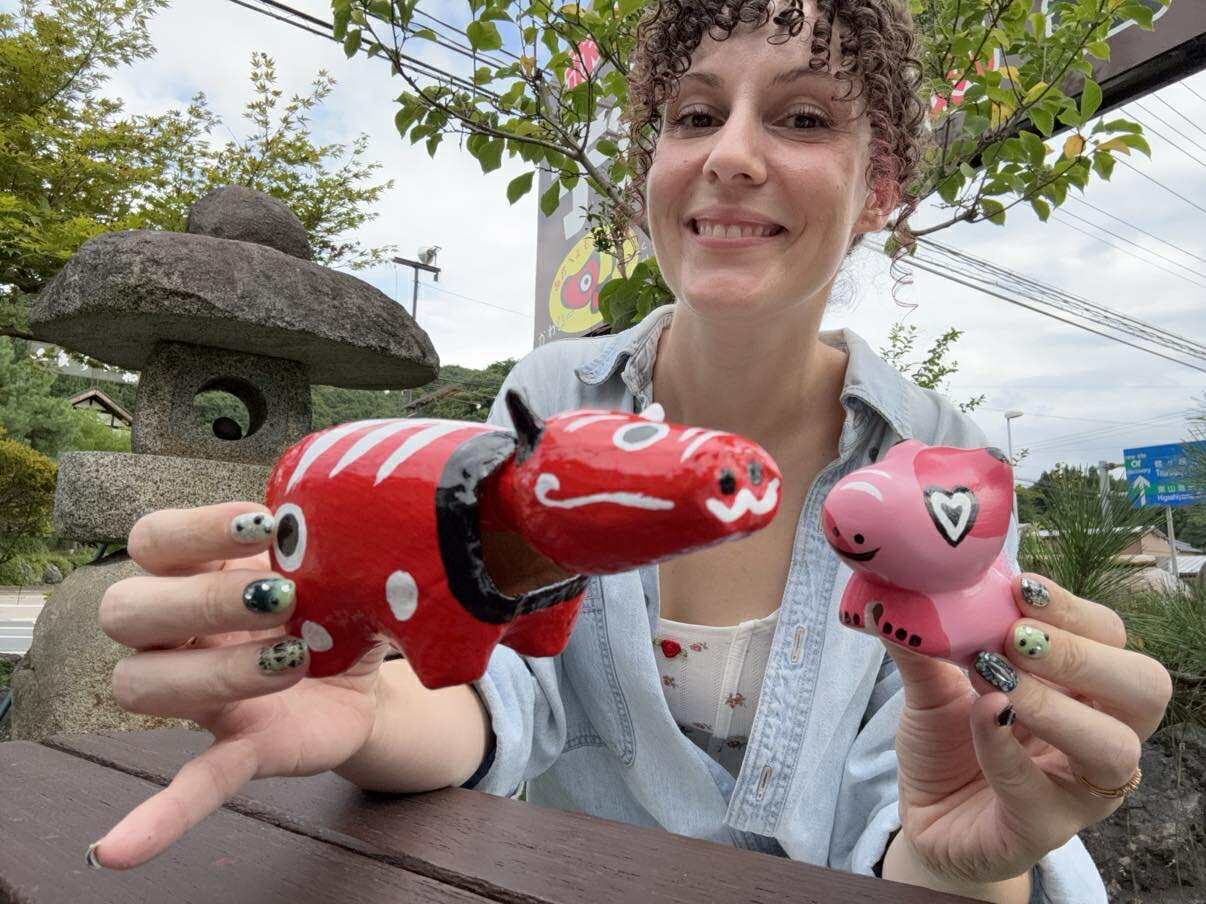Painting Joy: Sudo-san and the Akabeko of AizuFrom Apprentice to Master: A 50-Year Journey
Nearly half a century ago, a young man named Sudo began his journey as an apprentice. At that time, the world of Akabeko looked very different. There were no hands-on workshops, only direct sales and orders. Sudo-san’s Akabeko painting experience was one of the first activities like this in Japan. In Aizu, the Akabeko was already a well-known local symbol, but few could have predicted the role Sudo-san would play in shaping its future.
What sparked the change was a simple conversation with the owner of a small hotel where schoolchildren stayed on their trips. “Sudo-kun, couldn’t you run an Akabeko workshop for the kids when they come?” the owner suggested. That was 42 years ago, and Sudo decided to give it a try. Carrying his paints and tools, he traveled to inns and minshuku, setting up makeshift workstations wherever the children stayed. The kids loved it. Slowly, Sudo began to imagine creating a permanent space where visitors could gather, learn, and bring an Akabeko to life with their own hands.
Today, that dream has become reality. His workshop produces hundreds of Akabeko each year and can welcome up to 200 children at once, filling the space with laughter, paintbrushes, and the cheerful bobbing of red papier-mâché cows.
Welcoming the World, One Akabeko at a Time
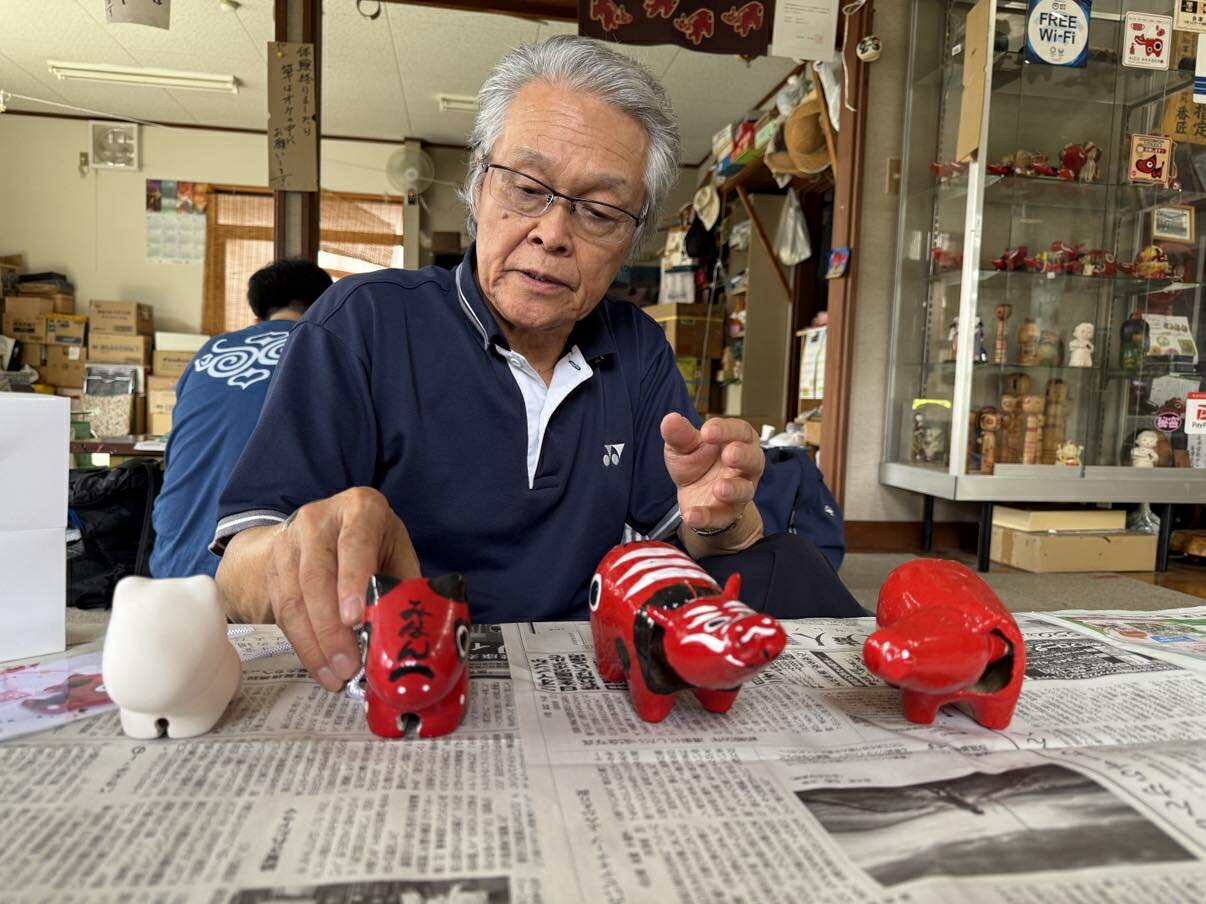
Over the years, Sudo’s workshop has also become a destination for Japanese and international visitors. Most of the latter come from other parts of Asia, often in the winter, drawn by the snow that feels exotic when you live in a warm country. Many are part of organized group tours. Western travelers are still fewer, but those who do make the journey are warmly welcomed.
Language is no barrier. Sudo-san keeps an English explanation sheet handy, uses a translation app when necessary, and—perhaps most importantly—relies on the universal language of hand gestures and paintbrush strokes. Craft, after all, doesn’t need many words. Each visitor leaves with not only a handmade Akabeko, but also a sense of connection to Aizu’s history and to Sudo-san’s dedication.
For travel agencies, his workshop is a perfect hidden gem: an activity that combines culture, creativity, and fun in a way that’s approachable for anyone, regardless of language or age.
The Legend and the Spin-Off: Akabeko vs. Akabe
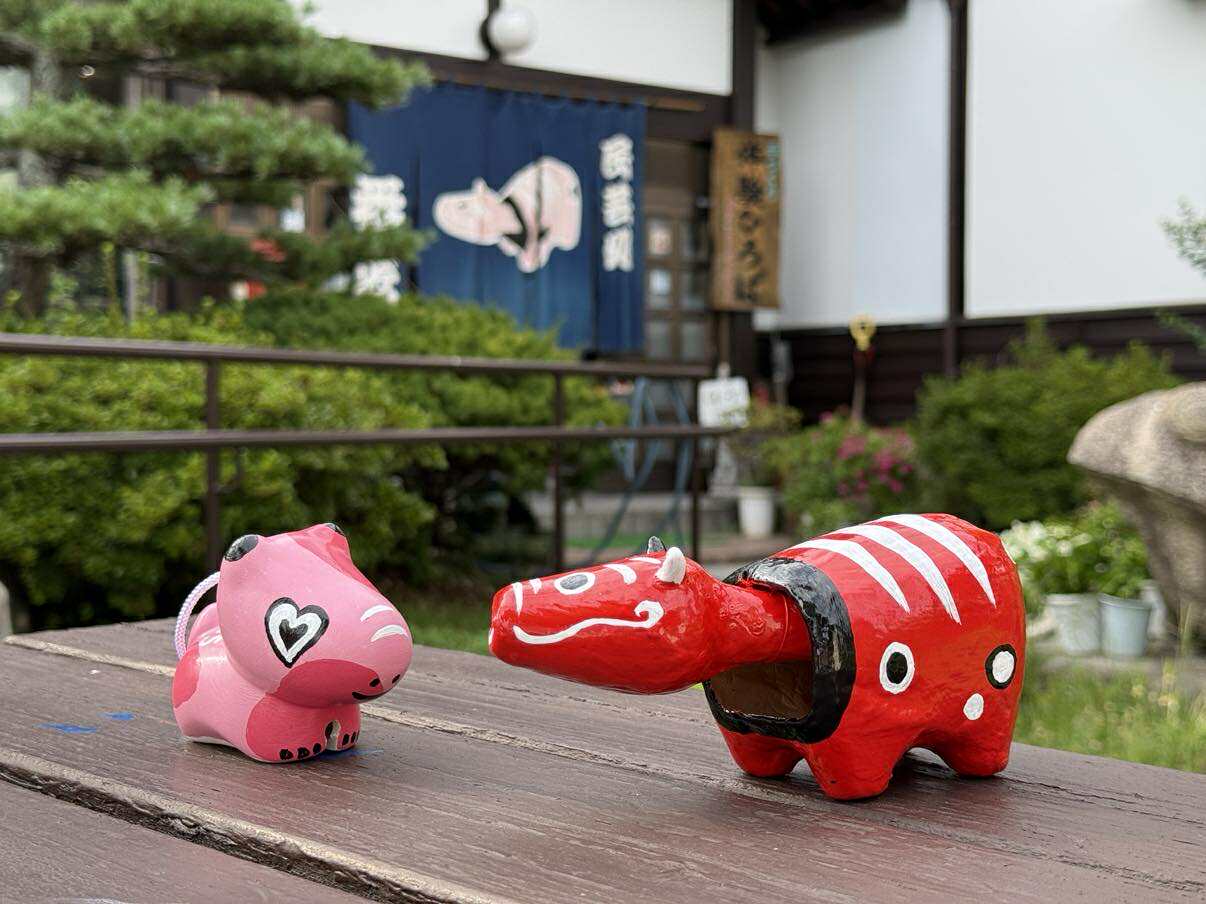
The traditional Akabeko comes with a powerful legend. Long ago, during a devastating epidemic, it was said that children who owned an Akabeko survived while others fell ill. The red cow became a talisman of protection, especially for the young. Painted in deep crimson, with a wobbly head that bobs as if nodding in agreement, the Akabeko remains a symbol of resilience and good fortune.
But Sudo didn’t stop there. In 2020, he introduced a playful new creation: the Akabe. Think of it as Akabeko’s fun younger cousin—less bound by tradition, more open to imagination. Akabe can be painted in any color, decorated with unique patterns, and even comes with a small bell to add a joyful ring. Unlike the Akabeko, which you can find all over Aizu, the Akabe is exclusive to Sudo’s workshop. If you want to make one, you have to come here.
In just a few years, the Akabe has already become wildly popular, with its cute illustrations appearing everywhere from postcards to posters across Fukushima. It’s a clever way to bridge heritage with modern creativity, making the tradition more accessible and appealing to younger generations.
Crafting the Akabeko: Tradition in Every Stroke
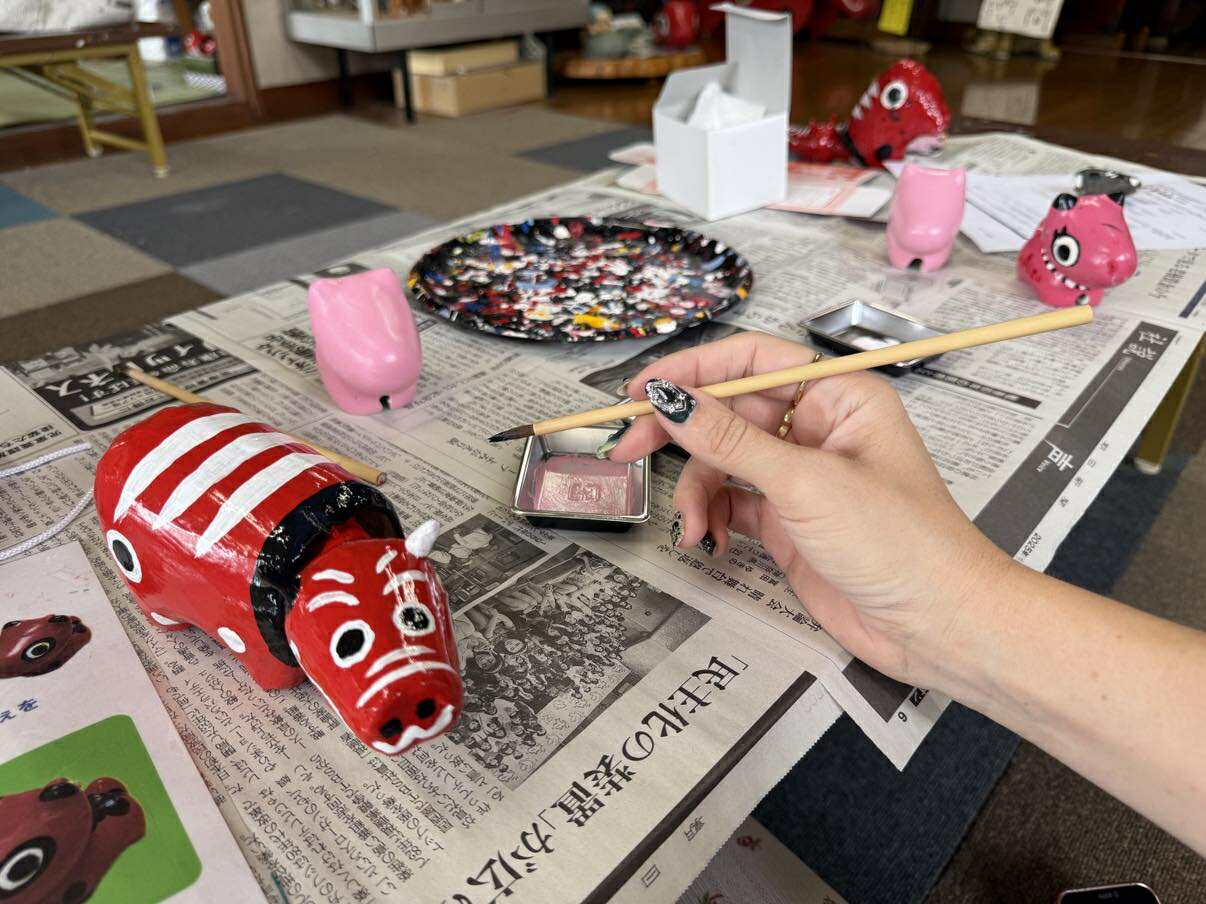
The process of making an Akabeko shares similarities with creating a Daruma. The body and head are crafted separately before being assembled into the familiar nodding form. Visitors usually join in at the most enjoyable stage: painting. For Sudo-san too, his favorite step is the final touch—painting the details that bring the Akabeko to life.
I had the chance to try my hand at both an Akabeko and an Akabe, and it was every bit as fun as I hoped. For my Akabeko, I stuck to the traditional deep-red colors, carefully following the patterns that carry centuries of symbolism. For the Akabe, though, I let my imagination run free—using shades of pink and details that made it feel like my own little buddy. What made the experience so special was Sudo-san’s teaching style: he’s an excellent and encouraging guide, offering just enough advice to inspire you while giving you the space and time to create at your own pace. With his gentle encouragement, it felt less like a class and more like being welcomed into the long tradition of Aizu craftsmanship.
The workshop buzzes with energy as children and adults alike carefully paint their creations, laughing when the paint strays outside the lines. In the end, every Akabeko is unique, a reflection not just of tradition but of the individual who painted it.
Holidays, Bells, and Smiles
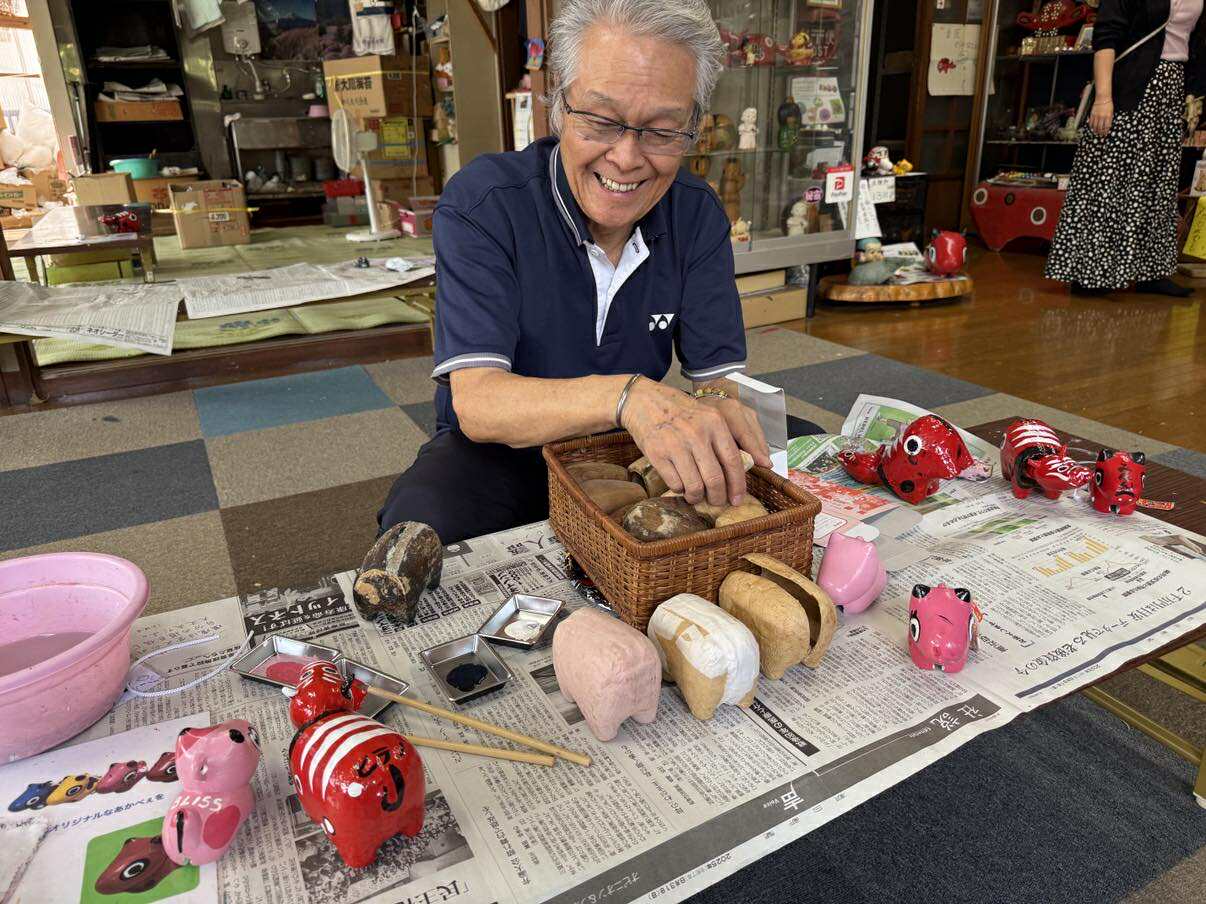
Running a workshop that produces hundreds of Akabeko each year and welcomes busloads of children and international tourists is no small task. Sudo-san and his team work tirelessly, taking only a short break at New Year before starting the cycle again.
And yet, there’s no sense of fatigue in his demeanor. Instead, there’s pride—and joy. Whether it’s a traditional Akabeko meant to ward off illness or a colorful Akabe with a bell designed to spread cheer, each piece is made with care and joy.
In many ways, the Akabeko embodies the spirit of Aizu itself: resilient, welcoming, and always ready to nod along with life’s challenges. Thanks to Sudo’s creativity and dedication, new generations—whether local schoolchildren or curious travelers from far away—get to carry that spirit home with them.
Akabeko Crafter Bansho Information
- Name:
- Akabeko Crafter Bansho
- Address:
- 1 Chome-6-3 Wada, Aizuwakamatsu, Fukushima 965-0811
- Business Hours:
- 9:30 AM – 4:30 PM
- Closed:
- Closed during the New Year Holidays (Dec. 31, Jan. 1, Jan. 2)
- Access:
- About 10 min. by taxi from Aizuwakamatsu Station 15 min. by Haikara-san Bus or Akabe Town Bus (get off at the Wada stop).
Driving is also convenient with parking available onsite (15 parking spots). - Official Website:
- https://akabekotaiken.com/
*Japanese only - How to Reserve:
-
- Individuals: No reservation required
- Groups of 10 or more: Reserve by fax or phone
- Akabeko painting experience fee:
- 1300 yen
- Phone:
- 0242-27-4358
